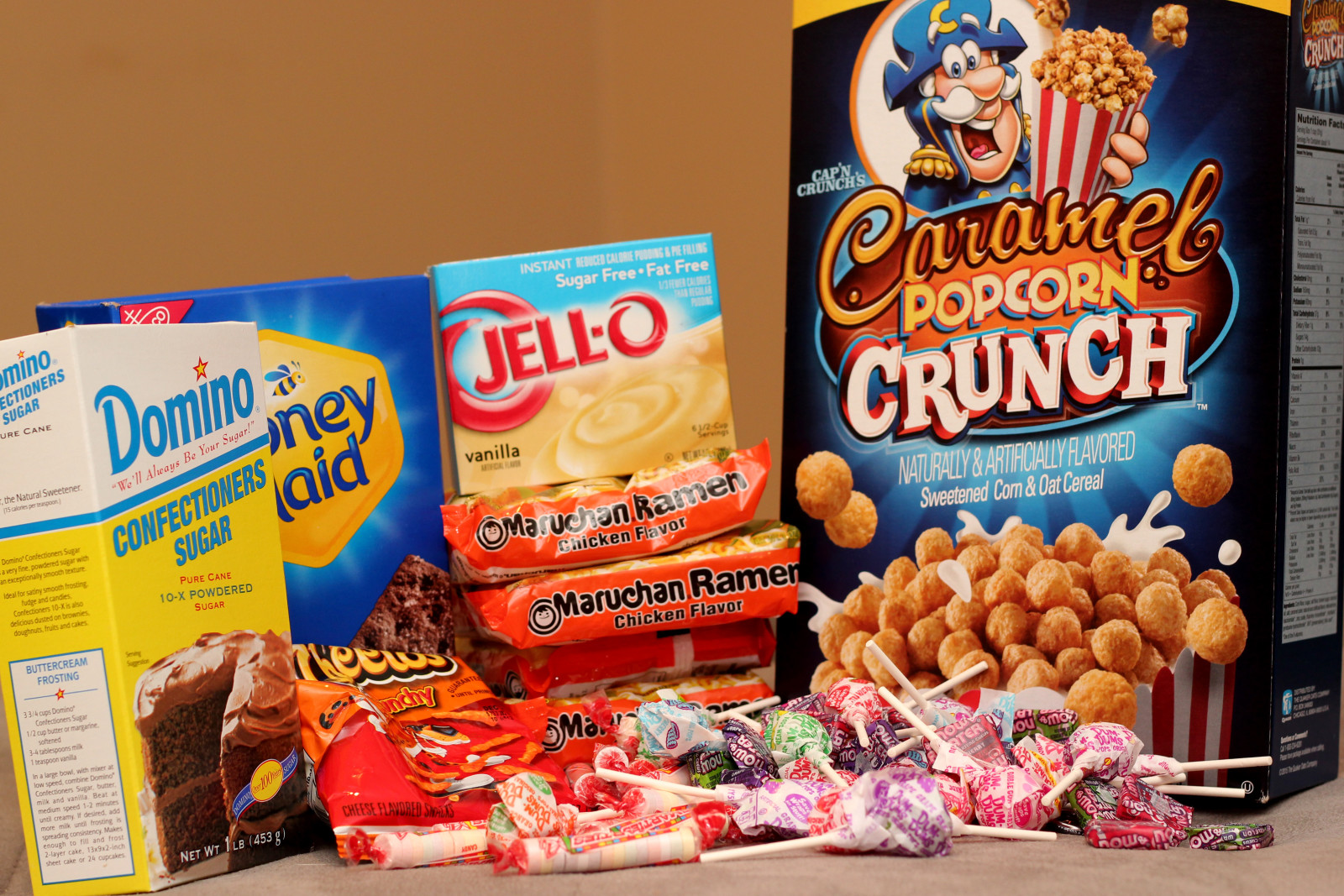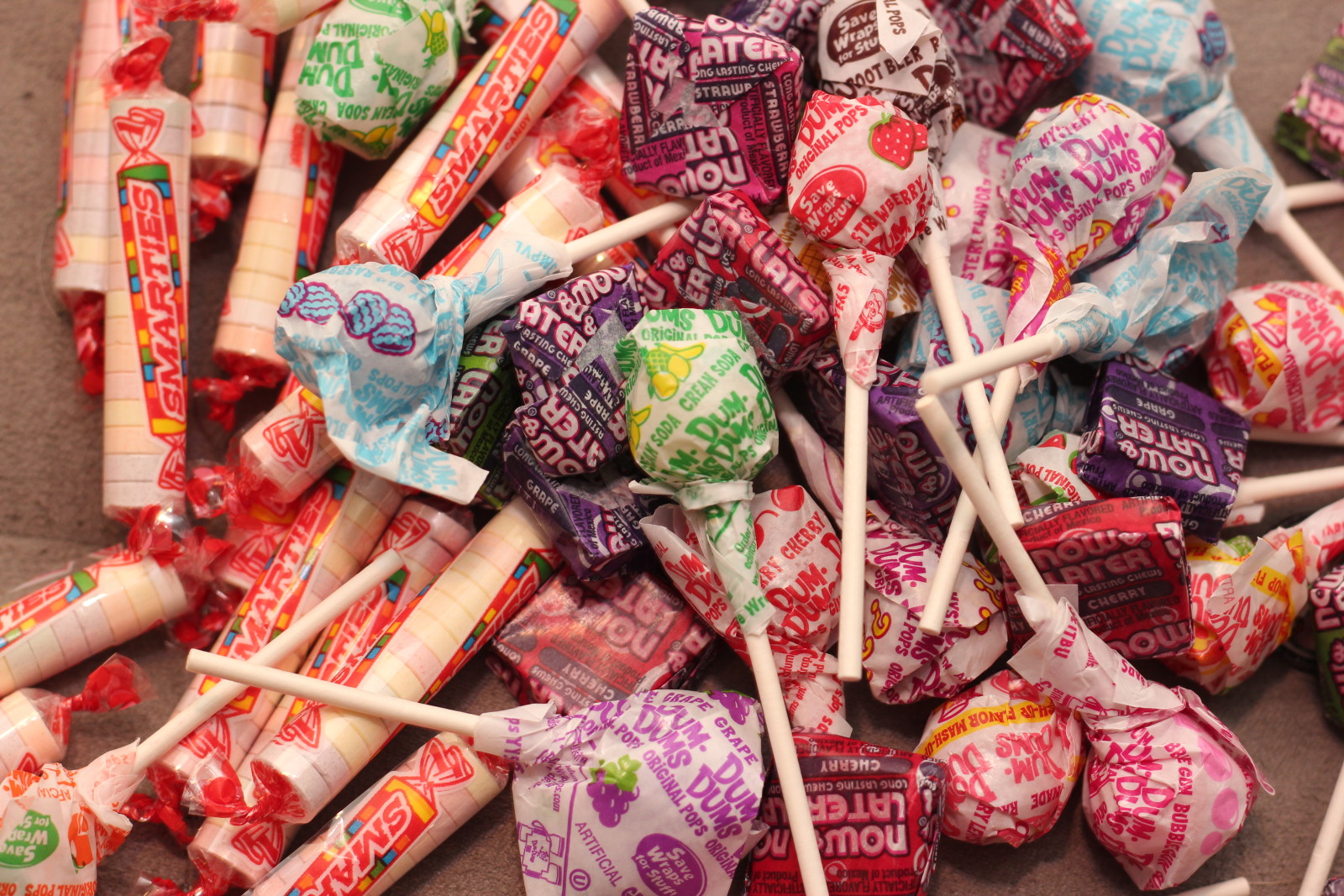 Breast cancer is now the most common form of cancer in the United States and it may be our fault. That is to say that our diet — particularly our favorite sugar-laden snacks and sodas — may be contributing to the rising rates more than we realize.
Breast cancer is now the most common form of cancer in the United States and it may be our fault. That is to say that our diet — particularly our favorite sugar-laden snacks and sodas — may be contributing to the rising rates more than we realize.According to the National Cancer Institute, an estimated 230,000 cases of breast cancer were diagnosed in 2015 in the United States with an estimated 40,000 American deaths caused from breast cancer. This is more than 10,000 more cases than the next leading cancer diagnosis — lung and prostate.
My mom was diagnosed with breast cancer in high school and her mother battled it early in my childhood. At one point, that was unique, but now, it’s an anecdote I have in common with far too many people. With almost one percent of the American population affected — a huge number when it comes to illnesses and diseases (3.8 percent of the American population has AIDS, to put the numbers into perspective) almost everyone has an aunt, a cousin, a sister, a daughter, a mother or a friend who has been affected by breast cancer.
Now, breast cancer is no longer a woman’s disease either. In 2015, more than 2,000 American men were diagnosed with invasive breast cancer. However, despite these alarming statistics, breast cancer rates have fallen off since the 1990’s and have remained relatively stable in recent years, with deaths from breast cancer dropping off significantly.
The Downfall of Sugar
Earlier this week, a research team from M.D. Anderson Cancer Center at the University of Texas has published findings that may change the way you look at sugar. The results pertain to dietary sugar in particular — think the table sugar you add to your coffee every morning or the high-fructose corn syrup that’s in well…everything these days.
The results aren’t too surprising for many people in the health and nutrition world. Many studies over the past five years have indicated that sugar, and processed sugar in particular is just no good. We already knew that an overconsumption of sugar causes a myriad of health problems — obesity, cardiovascular issues, osteoporosis, diabetes and heart disease to name a few.
But now, scientists and nutrition advocates alike have taken it one step further in their condemnation of sugar. Documentaries such as Sugar: The Bitter Truth, Fed Up and Hungry for Change use the medium of film to examine not only the effects of sugar, but even lob accusations about FDA cover ups, skewed studies funded by soda and junk food companies and lobbying money used to hush up even our highest-ranking government officials, including Michelle Obama’s Let’s Move! campaign. Entire dietary programs such as the Whole30 focus primarily on breaking sugar addiction and curing yourself of the “sugar dragon.” Studies like this one published by the United States National Library of Medicine compare sugar addiction to drug addiction, using terms like “bingeing” and “withdrawals”.
Journalism powerhouses like the New York Times are running articles titled “Is Sugar Toxic?” Yes, you read that right. Toxic. As in poisonous. As in, we knew too much sugar was bad for us, but now we think it’s actually killing us. It’s not just something we should avoid, it’s deadly.
Details About the Study
Now, this study released by scientists at M.D. Anderson, which was centered on rats, is providing the first definitive link between the consumption of dietary sugar and breast cancer.
In the actual study, scientists did four studies. In each of the four studies, there were four groups of mice. In each study, one group — the control group — would be fed a diet with no sugar in it. The other three groups would be subjected to diets with varying levels of sugar in them. In the last group, one mouse was given sucrose in his diet, another was given glucose, another was given fructose and the last one was given glucose and fructose.
The Science Behind Different Types of Sugar
Now before we go any further, let me break down what that means for you.
First of all, glucose, fructose and sucrose are just different types of carbohydrates for your body. There are two types of carbohydrates — monosaccharides and disaccharides.
A monosaccharide is a simple carb with only one sugar unit. These are also referred to as simple carbohydrates. Both glucose and fructose are monosaccharides. Glucose is your body’s favorite form of energy. When you consume foods with simple carbohydrates in them — think fruits and vegetables — your body converts them into glucose, grabbing as much energy as it needs from them. However, once it’s gotten it’s fill of energy, it then begins converting the leftover carbohydrates into fructose, which isn’t so good.
Although fructose is a carb, it acts more like a fat in the body and stores accordingly. This is why certain high-carb fruits and vegetables — think pineapple, mangos and potatoes — are good for you but should only be eaten in moderation. Although fructose isn’t necessarily quite as bad as table sugar, it is definitely something to be avoided. However the body seems to tolerate fructose a little bit better when there is more or about the same amount of glucose in a food.
A disaccharide is when two sugar units come together and form a single unit. Sucrose, or table sugar (the type that has typically been dubbed the bad, unhealthy sugar), is a disaccharide comprised of glucose and fructose.
So, now that we have that science out of the way, it’s easier to understand that three of the test groups of mice were fed varying amounts of bad sugar to see how it affected their diet. In the last group, one mouse was fed bad sugar, one mouse was fed glucose or good sugar, one mouse was fed just fructose, and one mouse was fed fructose and glucose.
Sugar and Breast Cancer
This is when the results get alarming. Without getting to deep into the study — although you can do that here if you’re interested — the results were that mice who were fed higher amounts of sucrose had a higher incidence of breast tumors when they were examined at six months old. What’s even more alarming is that the mice who were fed both sucrose- and fructose-enriched diets showed not only larger amounts of breast tumors, but larger amounts of lung tumors, indicating that higher amounts of sugar could also increase the chances of a cancer metastasizing or moving into other parts of your body as well.
In case you were wondering where the researchers got their numbers for how much sucrose to feed each mouse, researcher and assistant professor of palliative, rehabilitation and integrative medicine, Peiying Yang, Ph.D., said the levels were comparable to those found in an average Western diet according to a press release from M.D. Anderson.
So What Does That Mean For Me?
To simplify things, the implications of this study are huge for all of us. Moderating our sugar intake — even when consuming “healthier” foods like fruits and vegetables — is crucial.
But what about those people that eat really terribly and still don’t “see” any adverse health effects? Another scary part of this study indicates that the mice that were fed high-sucrose diets weighed about the same as the control mice.
At this point, weight is not an indication of health. Melissa and Dallas Hartwig introduced the concept of being “skinny-fat” — having an ideal weight, but still having too high of a body fat index — in their novel “It Starts With Food.” Again, with this study, we see that simply looking a certain way isn’t enough to be healthy.
Preventative Measures for Breast Cancer
If you have a family history of breast cancer, there are certain steps you can take to either prevent being diagnosed with it or to catch it early enough that it is treatable.
First things first, find out if you test positive for a hereditary mutation in your BRCA1 and BRCA2 genes. These genes function to produce proteins that supress tumors. However, many women have inherited mutations of these genes, meaning that they can’t produce those proteins correctly. If you have the mutation, your chances of having breast or ovarian cancer are significantly higher.
According the National Cancer Center, “About 12 percent of women in the general population will develop breast cancer sometime during their lives. By contrast, according to the most recent estimates, 55 to 65 percent of women who inherit a harmful BRCA1 mutation and around 45 percent of women who inherit a harmful BRCA2 mutation will develop breast cancer by age 70 years.”
If you do test positive for these genes, there are many steps you can take to lower your risks. There are certain medications your doctor may prescribe for you to take. You also have the option of having both of your breasts removed in a procedure known as a double mastectomy. You and your physician can decide what options are best for you based on your age and your health history.
If you do not test positive for either of the gene mutations but still have a strong family history of breast cancer, talk to your gynecologist about your best options for catching cancer early. Your doctor will likely factor in who in your family has had it, their age, and how closely related you are. In my case, I will start getting mammograms at 33 instead of the recommended age of 40. If you are a male with a history of breast cancer, find a specialist in your area who can help you to map out a plan of action for detecting and preventing breast cancer.
Regardless of your sex or your risk for developing breast cancer, you should be performing monthly home exams to detect changes in your breasts. You can learn more about that here.
References



